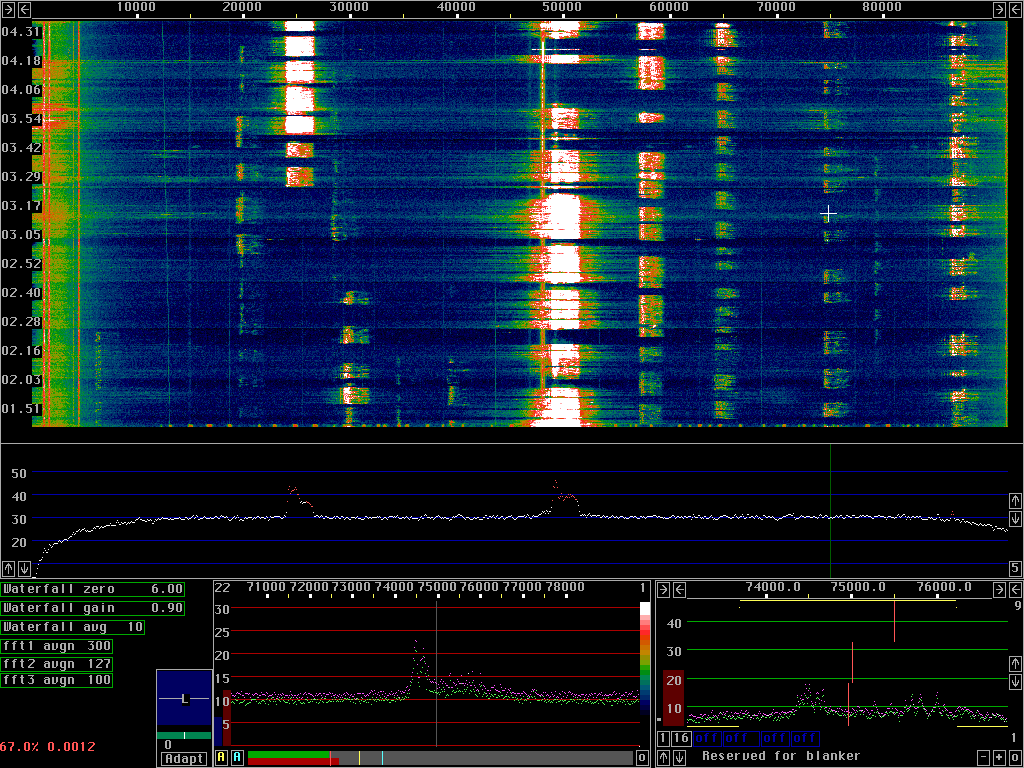|
When some part of the noise floor is excluded from the weak
signals, the blanker will not operate on the corresponding
frequencies which means that the interference pulses are not
removed on these frequencies.
As a result strong signals of short duration occur on the
waterfall graph.
This phenomenon is particularly pronounced when the interference
level is unstable causing the fft1 noise floor to jump up and down
by tens of dB's.
Note that the selected frequency, the passband selected in the
baseband graph, is always treated as weak signals.
This is new from linrad00-29 and is clearly visible in fig. 5.
Fig.6 shows what happens if incorrect settings of the fft1
threshold is combined with similar settings of the fft2
threshold.
The artificial signals seen by fft2, created by an incorrectly
placed group of red dots, will cause a real output from fft2
which will keep the frequency red in case the fft2 threshold is
low enough and fft2 averaging is small enough for a signal of
short duration to get sufficient amplitude.
Linrad allows currently only the mode intended for weak cw signals.
When averaging is set up in a reasonable way for weak cw signals
the selective limiter thresholds are easy to set properly.
Other modes will have selective limiter control differently
arranged.
When "misusing" linrad in weak cw mode to listen to ssb
signals or to get very fast response one has to be observant
on possible malfunction of the selective limiter.
|





